Summary: A detailed description of how to replace the front fork springs and/or oil on the DL1000. This particular example was using Hagon springs, but other types would follow the same process.
The original post was made by Kevshek and can be found here (See section 15).So here’s the kit ordered from Hagon. 2 Springs and Oil.
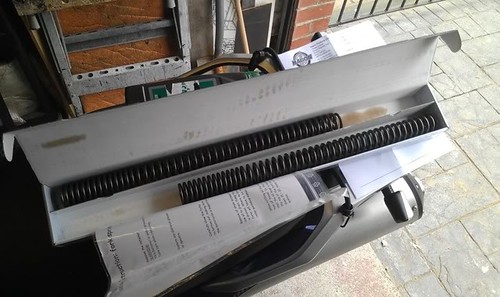
It's recommended to have a mate help you as you may need an extra pair of hands.
Place the bike on your centre stand or front yoke stand.
First adjust the preload and wind it all the way out to take off any pressure from the springs. Using a 24mm Spanner, crack open the strut tops while they are being held by the yoke, just a couple of turns.

Next using a 14mm socket, remove the 2 bolts each side, securing each front caliper on. After removing the 8mm bolts holding the brake lines to the forks, use a cable tie to hang the calipers out of the way safely.
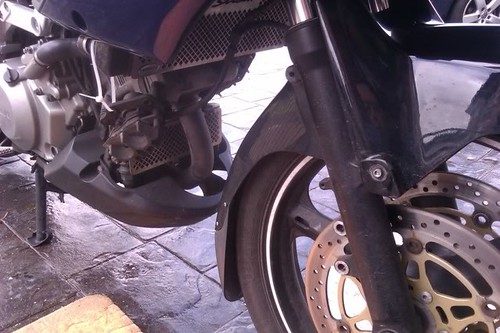
Now proceed to loosening the 10mm pinch bolts on the front right fork, then undo the front axle using an internal 19mm axle tool and remove the front wheel.
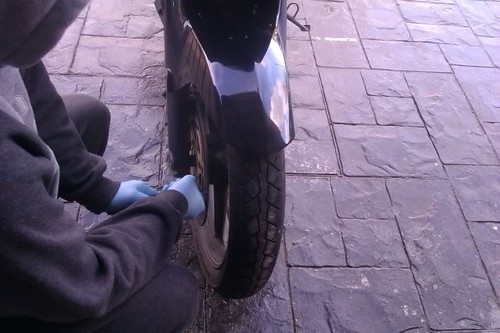
Then remove the remaining bolts either side securing the front mudguard to the forks. Be aware though, If your bike is anything like mine, you may have a couple of cheese bolts. I had to drill out and retap these buggers.
<!-- s### -->

<!-- s### -->

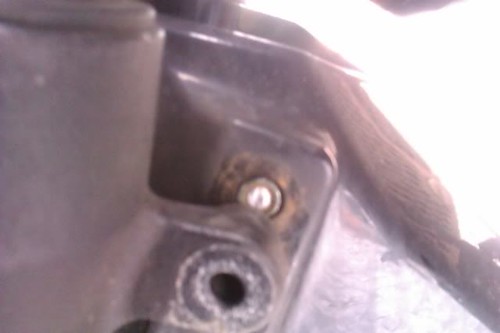
Squeeze the mudguard together slightly and remove.
Now the forks are freed up at the bottom end, its time to drop them out. Using a 10mm socket, loosen the 2 lower yoke pinch bolts.
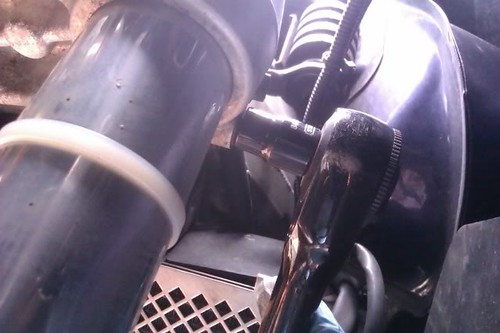
Next loosen the top yoke pinch bolt and be ready to catch the fork.
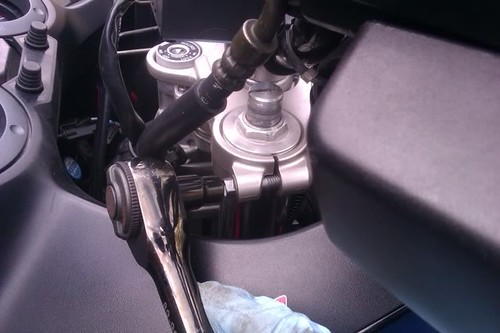
Now repeat for the other side.
To disassemble the fork, use a 24mm socket and apply downward as you remove the cap. The threads on the caps are very fine and you don’t want the spring pressure blowing them out on those last few turns.
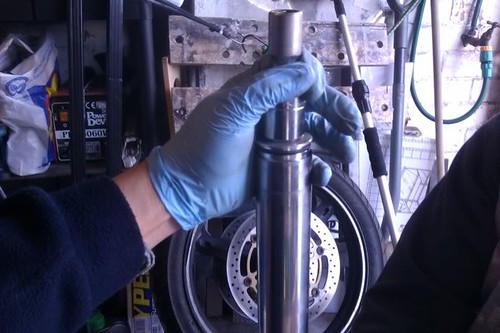
This next part may differ from K4 onwards but I’m not 100% sure.
Once the cap is off, draw upwards the internals. On the centre shaft, you’ll find this, top cap, lock nut, dished washer, spacer, flat washer, spring.
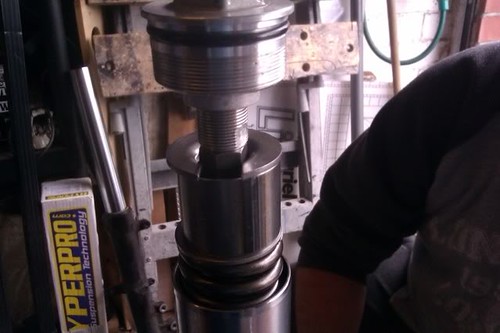
Using 2x 14mm spanners, loosen the lock nut against the bottom of the top cap. You may need to wind in the preload to expose the bottom threads. Either side of the threads you’ll see a flat spot which is for your 14mm spanner. Once you've done this, you can remove the top cap, lock nut, dished washer, spacer, flat washer and spring.
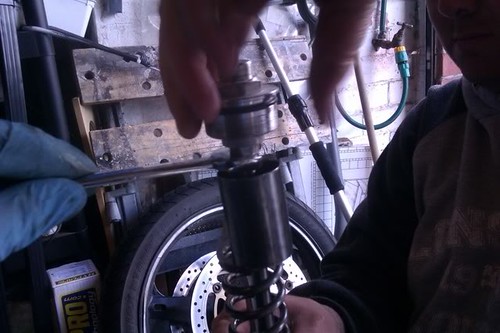
Now its time to tip out the old oil. Give it a few pumps upside down and then leave it to drain off.
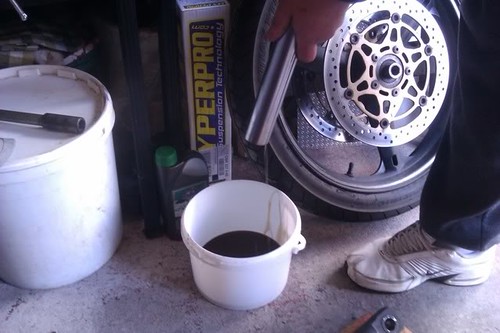
Repeat for the other side.
Once the old springs were off, I sized them up against my new ones. They were a tad shorter, 22mm in my case. New Spring - Top, Old Spring - Bottom
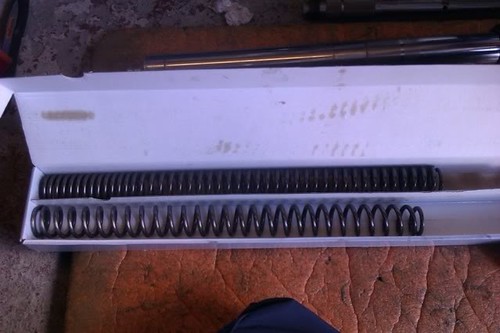
I was told to replace the spacer if the new spring was shorter than the combination of both the old spring and spacer. But before I could do that, I had to cut off 22mm from them, otherwise the overall length would be too long, which would mean the spring would be compressed as you installed it without even adjusting the preload.
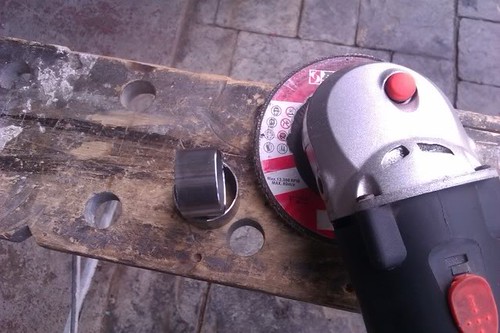
After the spacer was cut down, I used some sandpaper on a flat surface and ran the cut edge of the spacer onto it to get a flat finish. Then a quick wipe down.
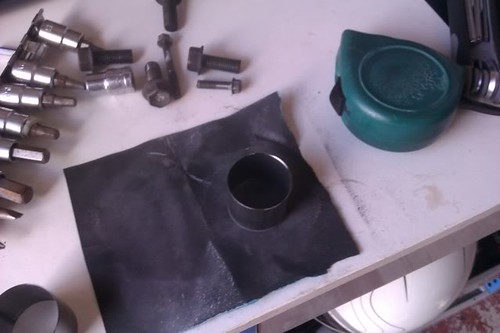
Time to fill the fork with oil. In the case of the K3, fill to 150mm air gap, so that 150mm from the oil level to the top of the fork stanchion when the fork is fully compressed. As you fill, remember to pump the fork and allow the oil to settle before you measure.
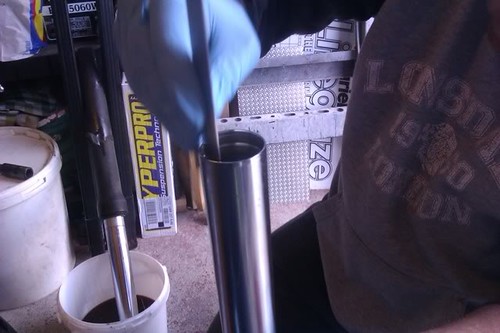
Keep adding little bits till it reaches your ruler. If you fill too much, then just pour some out.

Repeat for the other side.
Now you have them both filled, you’re ready to extend the stanchion, shaft and replace the new spring, however this is where it gets tricky. When you let go of the shaft to place the spring over it, it wants to drop down into the fork. To prevent this, use a bit of welding rod and wrap it around the lock nut. Use this to pass through your spring, washer and spacers ;) Also, you need to adjust the lock nut to the correct height. You need to measure 10.5mm from the top edge of the lock nut, to the top of the threaded shaft. In layman’s terms, you need 10.5mm of exposed thread for the top cap to screw onto. I had enough slack to adjust this when I had all the bits back together as per the next step.

Remember the order when refitting
Spring, flat washer, spacer, dished washer under the locknut, then top cap. Double check your 10.5mm of exposed threads before replacing the top cap. The lock nut and dished war will hold everything in place so don’t worry. Use your 2x 14mm spanner and nip it tight.
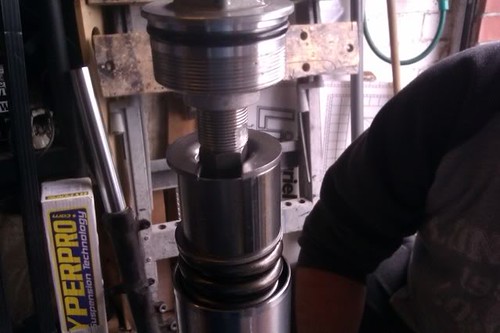
Now using your 24mm socket, apply downward pressure and tighten up the top cap. You may want to unwind any preload if you have moved it previously. Just nip up the top cap for now.
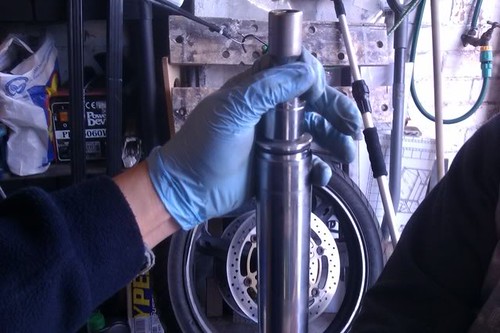
Once the forks are back together, you’re ready to refit to the bike. This is just the reverse of above. In short:-
Replace forks flush to top yoke
Nip up top yoke pinch bolt
Nip up bottom yoke pinch bolts
Replace mudguard
Replace wheel and axle
Tighten axle pinch bolts
Replace brake calipers
Replace brake line bolts
Tighten top caps
Tighten everything above to torque!
Tightening Torques
Yoke Pinch Bolts 23Nm
Front Axle 100 Nm
Front Axle Pinch bolts 23Nm
Caliper Bolts 39Nm
Fork Tops 20Nm[/b]
Now you need to setup the preload, search the forum for threads on that.